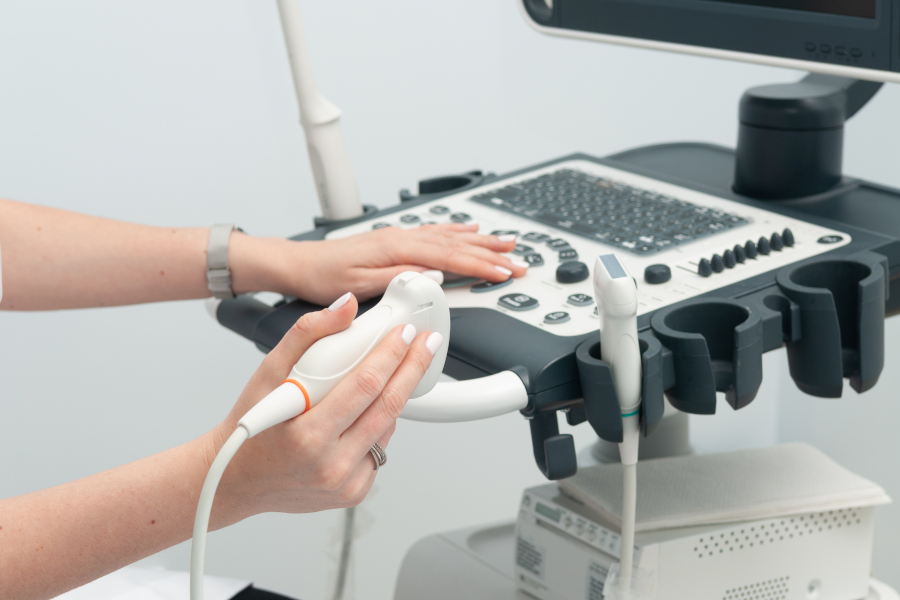Ultrasounds are a vital tool in medical diagnostics, used to visualize internal organs, monitor fetal development, and guide various medical procedures. Not just anyone can perform an ultrasound. It requires specific training and credentials. This blog explores the qualifications necessary to perform ultrasounds, focusing on the roles of ultrasound technicians and radiologists.
The Ultrasound Technician (Sonographer)
Training and Education
- Educational Pathways: To become an ultrasound technician, also known as a diagnostic medical sonographer, one typically needs to complete a postsecondary education program in sonography. These programs, often offered at community colleges and technical schools, can last from one to four years, awarding a certificate, associate degree, or bachelor’s degree.
- Core Subjects: Students in these programs study anatomy, physiology, physics, and sonography. They also receive hands-on training in using ultrasound equipment to capture images of different parts of the body.
Certification and Licensure
- Certification: While not always mandatory, certification can enhance a technician’s job prospects. Organizations like the American Registry for Diagnostic Medical Sonography (ARDMS) offer certification examinations that assess a candidate’s knowledge and skills.
- Licensure: Some states require sonographers to be licensed. The requirements for licensure typically include graduating from an accredited program and passing an exam.
Day-to-Day Responsibilities
- Patient Interaction: Ultrasound technicians prepare patients for the procedure, explaining what to expect and answering any questions. They ensure the patient is positioned correctly and apply a special gel to the area being examined to facilitate sound wave transmission.
- Image Capture: Technicians operate ultrasound equipment to capture the required images, adjusting the machine settings and the transducer (probe) position to get the best possible results.
- Preliminary Analysis: They often provide a preliminary analysis of the images to aid radiologists in their diagnostic process. Technicians are not qualified to make final diagnoses.

The Radiologist
Training and Education
- Medical Degree: Radiologists are physicians, which means they have completed medical school or osteopathy school, earning either an MD (Doctor of Medicine) or DO (Doctor of Osteopathic Medicine) degree, respectively-.
- Residency: After medical school, radiologists undergo four years of residency training in radiology, where they learn to interpret medical images including, ultrasounds, MRIs, CT scans, and X-rays.
- Fellowship (Optional): Some radiologists receive further specialized training in specific areas like pediatric radiology or breast imaging through additional fellowship training.
Certification and Licensure
- Board Certification: Radiologists typically seek board certification from bodies such as the American Board of Radiology. Certification involves passing rigorous examinations and demonstrates a practitioner’s expertise in radiology.
- State Licensure: Like all physicians, radiologists must be licensed to practice medicine in their respective states. This requires passing a series of exams and maintaining ethical standards.
Day-to-Day Responsibilities
- Diagnostic Analysis: Radiologists review images taken by ultrasound technicians to diagnose conditions. Their medical training allows them to identify diseases and conditions that may be visible on the ultrasound images.
- Reporting: After analyzing the images, radiologists write detailed reports on their findings. These reports are critical for the treating physician, who will base the patient’s treatment plan on this information.
- Patient Consultation: In some cases, radiologists also consult directly with patients to discuss their imaging results and the next steps in their care.

Collaboration Between Technicians and Radiologists
The relationship between ultrasound technicians and radiologists is collaborative. Technicians are responsible for acquiring high-quality images and may provide initial insights based on their experience and training. Radiologists then use these images, along with their medical expertise, to make accurate diagnoses and recommend treatment options. Effective communication and teamwork between these roles are essential for delivering the best patient care.
Ultrasounds are complex diagnostic tools that require skilled professionals to operate. Ultrasound technicians and radiologists play critical roles in this process, with each bringing specialized training and skills to the table. While technicians handle the technical aspects of image acquisition and patient care, radiologists provide the medical expertise necessary for interpreting these images. Together, they ensure that patients receive accurate diagnoses and appropriate care, highlighting the importance of professional qualifications in medical imaging.
This information is presented as a general guide to who is qualified to perform ultrasounds. It is for informational purposes only. The information provided is not intended to be the only information available about who Is qualified to perform ultrasounds. The material provided is not expected to be a substitute for advice or information from your physician or health care provider.
If you have any questions, concerns, fears, apprehensions, unease, or worry about who Is qualified to perform ultrasounds contact your health care provider immediately.



